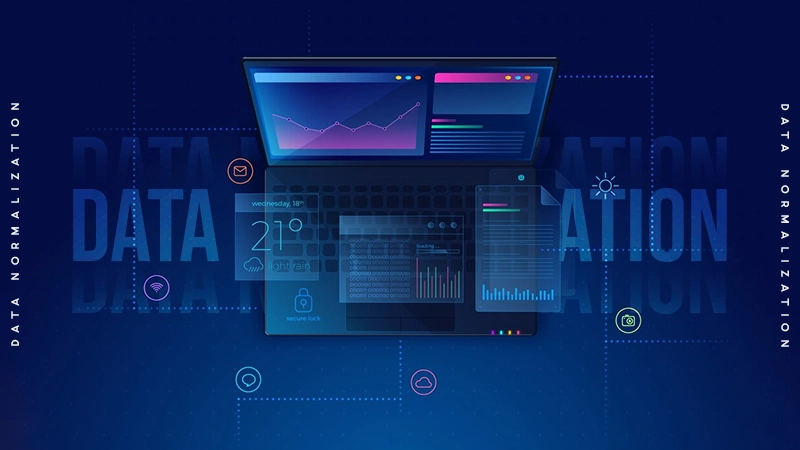It refers to the massive volumes of complex and diverse data that is collected, stored, and analyzed by retailers.
The Future of the Luxury E-Commerce Experience with the Revolvement of Big Data
- Learning the Power of Big Data in E-Commerce.
- One-to-One with Predictive Analytics.
- Data-based insights on the strategy of the Luxury Watch Brands.
- The Data Volume and Data Security dilemma.
- Being a Responsible Datauser to create Long-term Value.
- The future of data-driven E-Commerce.
- Frequently Asked Questions

The global market for personal luxury goods is on a relentless upward trajectory, projected to reach an estimated 360 to 380 billion euros by 2025. But achieving this wealth requires more than just a beautiful website; it requires a deeper understanding.
Welcome to an era when Big Data is not only an efficient tool but also the invisible hand that shapes the future of the Premium retail landscape. From the ultra-personalized product detection to predicting the next global trend in fine jewelry or haute horology, the ability to collect, analyze, and act on massive data volumes is key.
This transforms the exclusive, high-end, luxurious shopping journey into a scalable, intelligent, and very competitive digital experience.
KEY TAKEAWAYS
- Big is critical in e-commerce industries.
- Use timely analysis to get better predictions.
- Act like a responsible data user to create long term value.
Learning the Power of Big Data in E-Commerce.
Each scroll, click, and search query leaves a digital footprint. As they are collected on a large scale, such data points demonstrate compelling information regarding customer preferences, intent, and purchasing habits. This information is applied in e-commerce to offer the user a smooth shopping experience, based on individual users.
As an example, data analytics devices can be used to keep track of the most visited products, the duration of stay at a specific page, and whether a customer comes to buy again when he or she visits an online jewelry shop. Such data of behavior will allow businesses to anticipate the level of interest and adjust the marketing messages as per the customer intent.
The same tactics will work in the categories of fashion and watches, home decor and technology equipment. The capability to store and process millions of payment processes per day enables the e-commerce systems to be dynamic in line with market trends and customer demands.
One-to-One with Predictive Analytics.
Individualization has turned out to be an ingredient of e-commerce success. In the contemporary world, the customer demands brands to understand their likes and pre-empt their expectations. That is made possible by big data, which allows predictive analytics to check what clients would purchase in the future by drawing on the machine learning algorithms.
Consider, as an illustration, luxury retailers as the traders of expensive goods such as engagement rings. The process of analyzing customer data, including social media activity, browsing history, and demographical, helps the brands to offer individualized recommendations depending on life events and interests. When a user often receives jewelry or romantic presents, algorithms can make suggestions on the specific style or price range that fits the preferences of the user.
This intimate experience does not only boost the sales, but also enhances emotional attachment of the brand to the customer. Whenever shoppers can determine with them, they will be willing to stay with them and to come back again.
Data-based insights on the strategy of the Luxury Watch Brands.
Big data is also allowing luxury watches brands an advantage. Take the case of Tissot, a popular watching brand globally, which has adopted the digital revolution in order to increase customer interaction. Through evaluation of online usage and purchasing history and reviews, Tissot and other brands will be able to distinguish new trends, including increased fame of hybrid smartwatches or greater demand in certain markets.
Additionally, data analytics aids the brands to streamline their inventory optimization, pricing strategies, and marketing activity. Indicatively, where analytics shows that some of its watch models are trending among younger populations, the brand can target them in its ads and digital content. This is a proactive way that would not only enhance efficiency in sales but also make customers have their supplies in time and be relevant.
The Data Volume and Data Security dilemma.
Although data presents a lot of opportunities, it is not that smooth to deal with it. E-commerce applications deal with gigantic data every day- transaction history, customer profiles, and search history. This lays open them to cyberattacks and information breaches.
Recovery and protection of data has thus become an critical element of e-commerce infrastructure. The loss of a single piece of data will ruin customer confidence and interfere with operations. To protect sensitive information, businesses should have in place secure means of frequent backups, storage, and disaster recovery measures.
Moreover, because the regulatory laws on privacy are shifting internationally, such as GDPR and CCPA, the e-commerce firms need to be compliant in the manner they store, gather, and manipulate the data of the users. Prevention of breaches is not the end but the transparency and consumer confidence is the purpose.
Being a Responsible Datauser to create Long-term Value.
Customers are growing more cognizant of the utilization of their data. The brand reputation is now identified by transparency and ethical data management. Businesses that value privacy and safety and offer customers with their own experiences have more chances to get trust and relationships that can be built over the long term.
In the context of e-commerce companies, responsible data use has the consent of the user, has been identified as good communication, and anonymity of sensitive data. It also is the use of data to create real value, that is, assist customers in searching products that really fit their requirements instead of flooding them with irrelevant offers.
The future of data-driven E-Commerce.
The use of data in the build e-commerce experience will shift as technology advances. It is anticipated that predictive modelling, artificial intelligence, and real-time analytics will be even more advanced and will allow gaining deeper analytics and making decisions faster.
The difference between personalization and privacy will still exist in the luxury sector where emotional storytelling and exclusiveness are vital factors. It can be assisting one to choose the most suitable engagement ring or to select the right Tissot watch that fits their way of life, but in any case, applicable, big data makes every interaction seem natural, and rewarding.
Finally, the future of e-commerce is the ability of businesses to turn the data into meaningful relationships effectively -balancing security, innovation, and trust in the more digital world.
Frequently Asked Questions
What is “Big Data” in the context of luxury e-commerce?
How do luxury brands use Big Data for personalization?
Luxury brands use predictive analytics powered by Big Data to deliver highly relevant content, product recommendations, or exclusive early access offers.
What is the main security and privacy challenge Big Data creates for luxury retailers?
The main challenge is the inherent conflict between collecting vast amounts of personal data for deep personalization and the need to maintain robust security and regulatory compliance.
How does Big Data help luxury watch brands manage their inventory and pricing?
Big Data analytics provides luxury watch brands with data-based insights to optimize their operations.
How to recover unsaved Word documents? Someone recently asked me this on social media, and I found that a lot…
Real-time verification speed determines whether email validation operates seamlessly within user workflows or creates delays disrupting experience and conversion rates.…
Microsoft reported– Power BI is prevalent, with 97% of Fortune 500 firms adopting it in record numbers. The reality is…
There are significant differences between marketing today and what it was in the past. In those days, marketing firms focused…
A few weeks ago, a friend lost his photos and some important files from his iPhone 13. He immediately called…
As someone who has worked closely with data sets and analytics, I have seen how disorganized data can limit even…
If you have started learning about data, you must have come across the terms “discrete” and “continuous” data. But what…
How to connect a Windows PC to Apple devices, like iPhone or Apple TV? You may think of AirPlay, but…
Consumers are surrounded by more marketing messages than ever before. According to a recent report, there are over 27 million…






